Coughing and Spitting Assaults
How to Protect Yourself From Intentional Coughing and Spitting
As a company deeply involved in personal safety training, we watch carefully when new trends emerge in personal safety risk.
Since early March 2020 it has become increasingly common to see stories in the news about encounters with people who intentionally use coughing or spitting assaults on public services workers.
Examples of coughing or spitting assaults:
- "Man admits assault after hurling 'coronavirus' spit at bus driver and police in west London"
- "A man who tried to spit at police officers during his arrest for breaking lockdown rules has been jailed"
- "A teenager has been charged with assault after allegedly spitting at a police officer and claiming to have Covid-19"
Indeed we have even seen the story of Belly Mujinga, a 47-year old rail worker who was approached by a man on the concourse at Victoria station. After a very brief exchange of words, he unexpectedly spat in her face and told her he had the Coronavirus. Betty tragically fell ill and died just days later, on a ventilator at Barnet Hospital. Who would have thought that coughing or spitting assaults could ultimately be fatal!
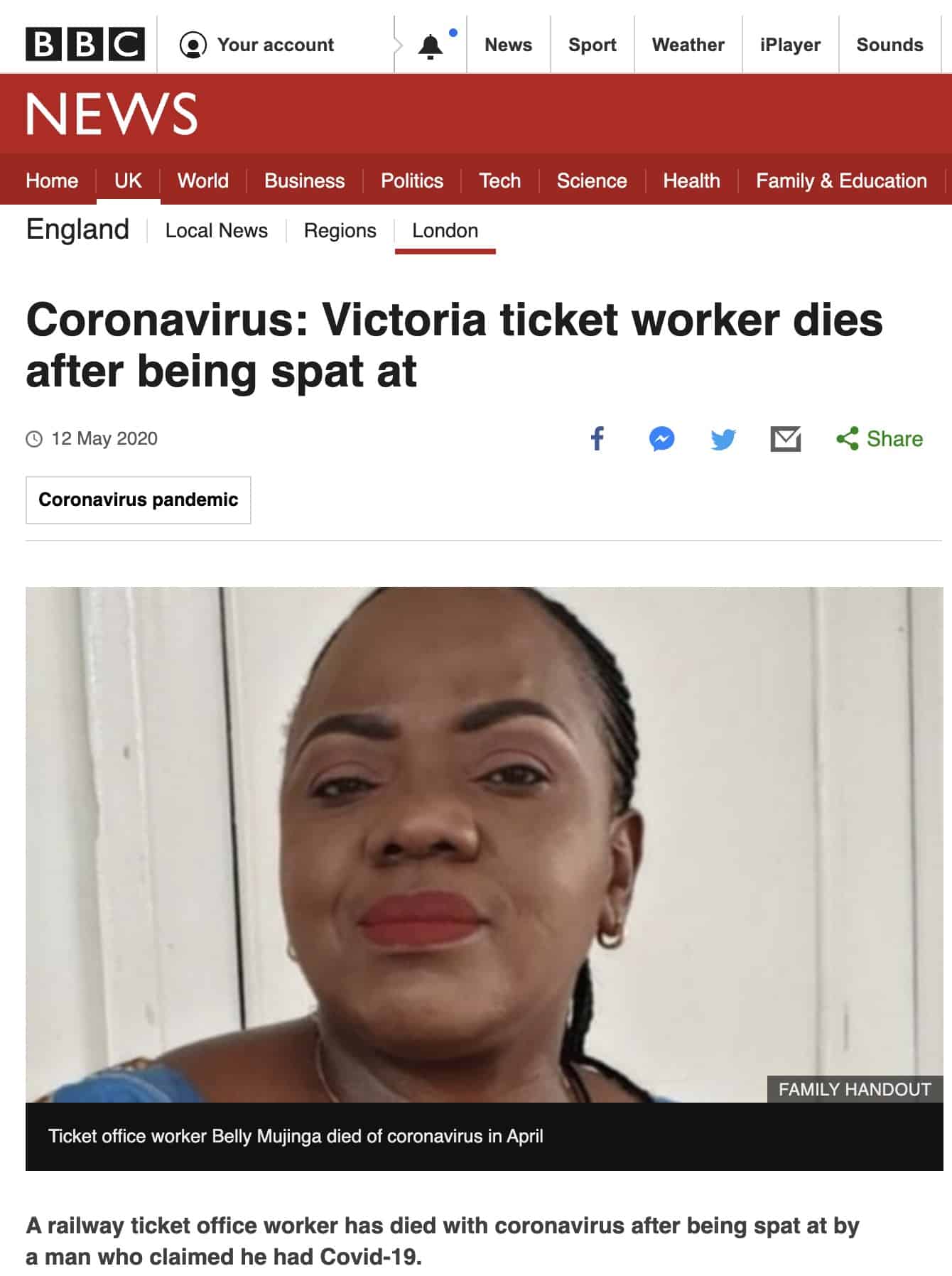
Coughing or spitting assaults has always featured in our risk assessment of self-protection for staff who face such behaviours at work, and even then, the risk of infection and very poor outcomes was high. Someone who is contaminated with bodily fluids from another person (even in the pre-coronavirus time) could expect to need testing for a number of high-risk infections, including HIV and Hepatitis.
This adds to the stress, anxiety, perhaps impact on the worker's family life after coughing or spitting assaults. It often takes a a protracted amount of time before the person would be declared physically safe from the assault, causing even more worry and anxiety in the process.
This video below shows the emotional realisation - and shock - from a spitting assault that has almost no immediate physical result or pain at all, but which has the potential to cause serious illness or worse.
Coughing or spitting assaults with potentially serious consequences
Although spitting has been an issue for a long, long time – particularly as "the assault of last resort" for many who are already being restrained, the emergence of coughing as an assault behaviour is now a realistic and forseeable risk for those who have to deal with occupational violence.
The transmission of COVID-19 is thought to occur mainly through respiratory droplets generated by coughing and sneezing, and through contact with contaminated surfaces. The predominant modes of transmission are assumed to be droplet and contact.
COVID-19 virus is expelled as droplets from the respiratory tract of an infected individual (for example during coughing and sneezing) directly onto a mucosal surface or conjunctiva of a susceptible individual(s) or environmental surface(s)
droplets travel only short distances through the air; a distance of at least 2 metres has been used for deploying droplet precautions; however, this distance is considered as the minimum rather than an absolute
.
With Coronavirus therefore being easily transmissible by spitting or by coughing, it appears that upset, frustrated or emotionally disturbed people out there are intentionally using these assaults to intentionally attack public services workers, or to resist arrest in law-enforcement scenarios.
Staff at risk of being coughed on or spat at...
The likelihood and severity from coughing or spitting assaults is really quite severe, so I wanted to explore some elements of the problem which can really help staff who might be at risk.
Personal Protective Equipment and Covid 19
The best-available guidance at the moment suggests that staff who must undertake risky close contact with Covid-19 infected subjects and staff who are to be specifically tasked with carrying out physical interventions on violent or disturbed persons should have the following Personal Protective Equipment (PPE) in order to comply with guidance:
- Goggle-type eye protection with adjustable strap and face sealing capacity
- Highest-Spec available face mask with around the head straps.
- Highest-Spec available Disposable overalls.
- Highest-Spec available Disposable protective gloves.
If your job role involves being inside the 2m safe distance which is advised by government, then you should be talking with your management about
A) the risk assessment of your work activities and
B) whether you need to be issued with the correct PPE for your role and
C) the expectations on you considering the first two factors
Where the correct PPE is not available, then staff should not be tasked with higher-risk close contacts and should instead revert to other options.
Other options to deal with aggressive or physically violent persons may include:
- Containment of a violent or disturbed person in an area by themselves, where possible.
- Disengage and revert to police contact, call 999.
Proxemics - being aware of distance, position and hand movements during an encounter
Remember the 10-5-2 Distancing and Proxemics from your conflict management training course.
Distance affects the comfort level of people interacting with you and your personal safety. There are three points where you should evaluate risk – whether you are approaching them or they are approaching you.
Here is one of our most experienced and popular trainers, Alex Hunter, talking about the 10-5-2 concepts
Take a lesson from the playbook of a very experienced contact professional
Joel Lashley, a Vistelar master-trainer and long-experienced hospital security professional with deep interests in communication strategies, offers a perspective to staff.
He says that people who react instinctively to the crisis in front of them tend to:
- get too close
- talk too loud
- speak too fast, and
- say too much
Sometimes the lessons must be learned the hard way, so in our training sessions for some hospital security staff recently (designed and delivered using our evidence-based and research-informed SCENA approach) we specifically shaped some scenarios and role-player behaviour which was intended to teach some of these lessons to our learners.
Watch here as a security officer learns the consequences (the penalty) of getting too close to the distressed patient...
One of the ways we want to help you protect yourself is to show you the pre-cues
We take a lot of interest in the pre-cues here at Dynamis and we show all our learners that by spotting the pre-cues to an assault, they can potentially respond more quickly than otherwise if they did not have the previous information in their mental models, about how these assaults are initiated.
I will also show you some covering options that you can do, which piggyback on your instinctive natural response, built-in to the human body, to mitigate the risk of contamination in your eyes, mouth or nose.
Of course none of what we’re going to show you should preclude the use of PPE or your isolation or containment protocols. So of course if you don’t have to be in front of somebody who is infected with a disease or infectious material hazard or substance, then please don’t.
However, if you are, then the following things may be helpful to you.
First of all, we know that to respond effectively to violence, you need to be able to recognise it very quickly. So knowing what the pre-cues are for somebody spitting or coughing on you, is going to be really helpful in responding appropriately. (see our YouTube playlist about designing self-protection tactics to learn more about this)
How can you know if someone is going to spit or cough at you?
So look at this particular subject. He’s pursing his lips, tilting his head back, and his body moves in that wave in order to project the spit in front of him.
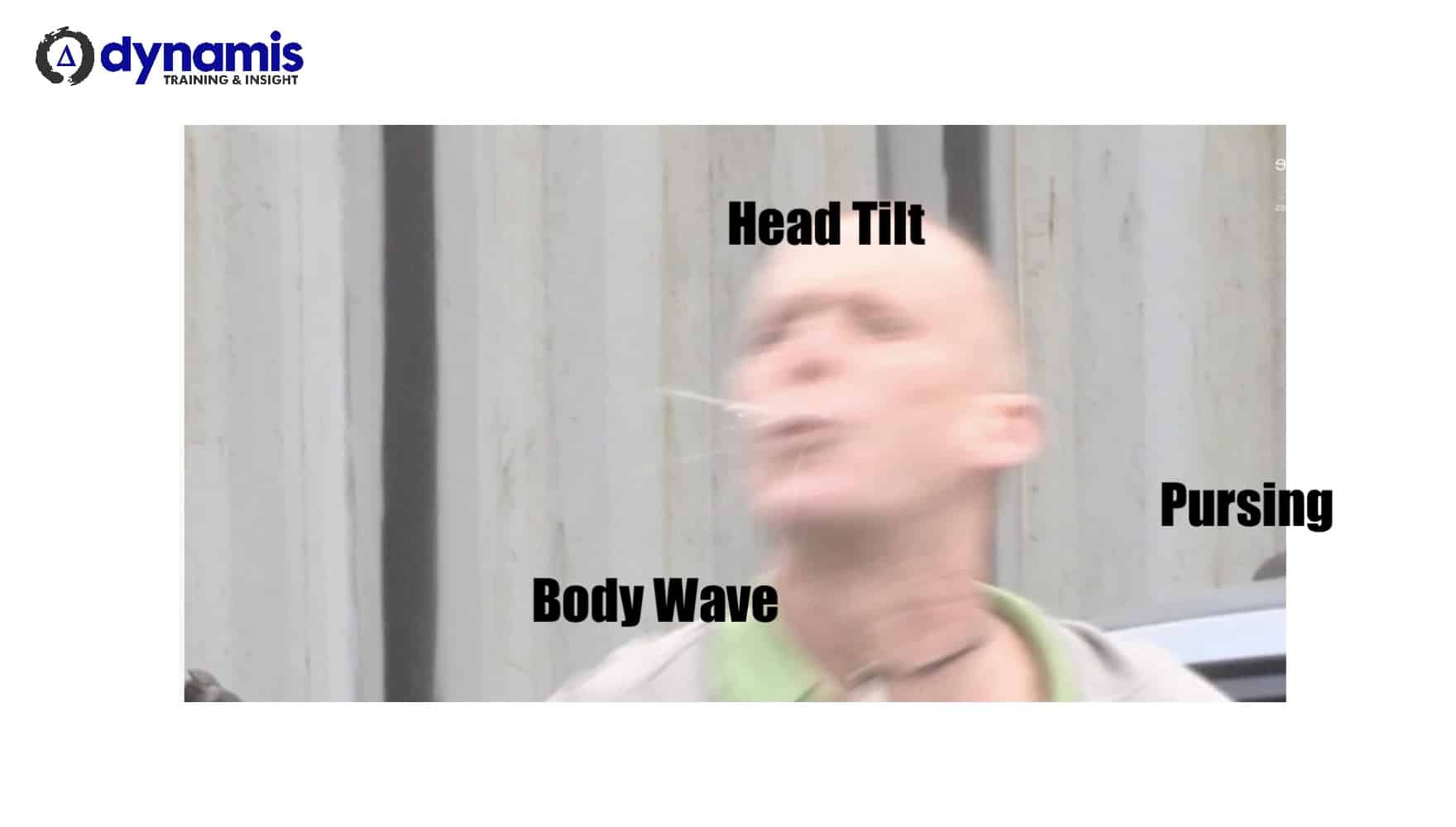
This man does many of the same things.
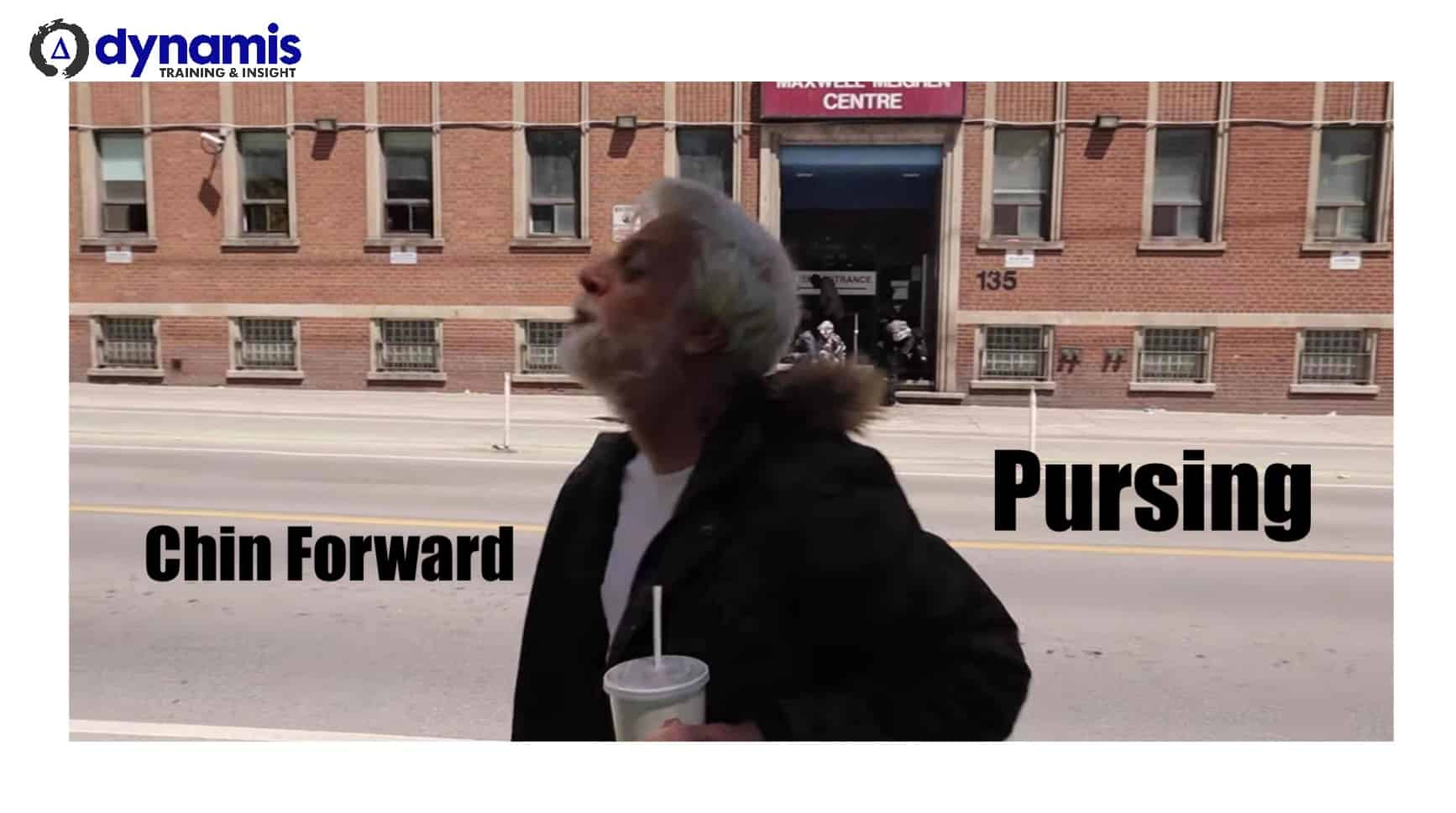
In this next one, the young woman, her cheeks go really puffy when she’s getting ready to propel the spit through her pursed lips – delightful!

This young woman, the pointy finger is a real tell. Also, when she pushes her chin forward towards the person’s face.
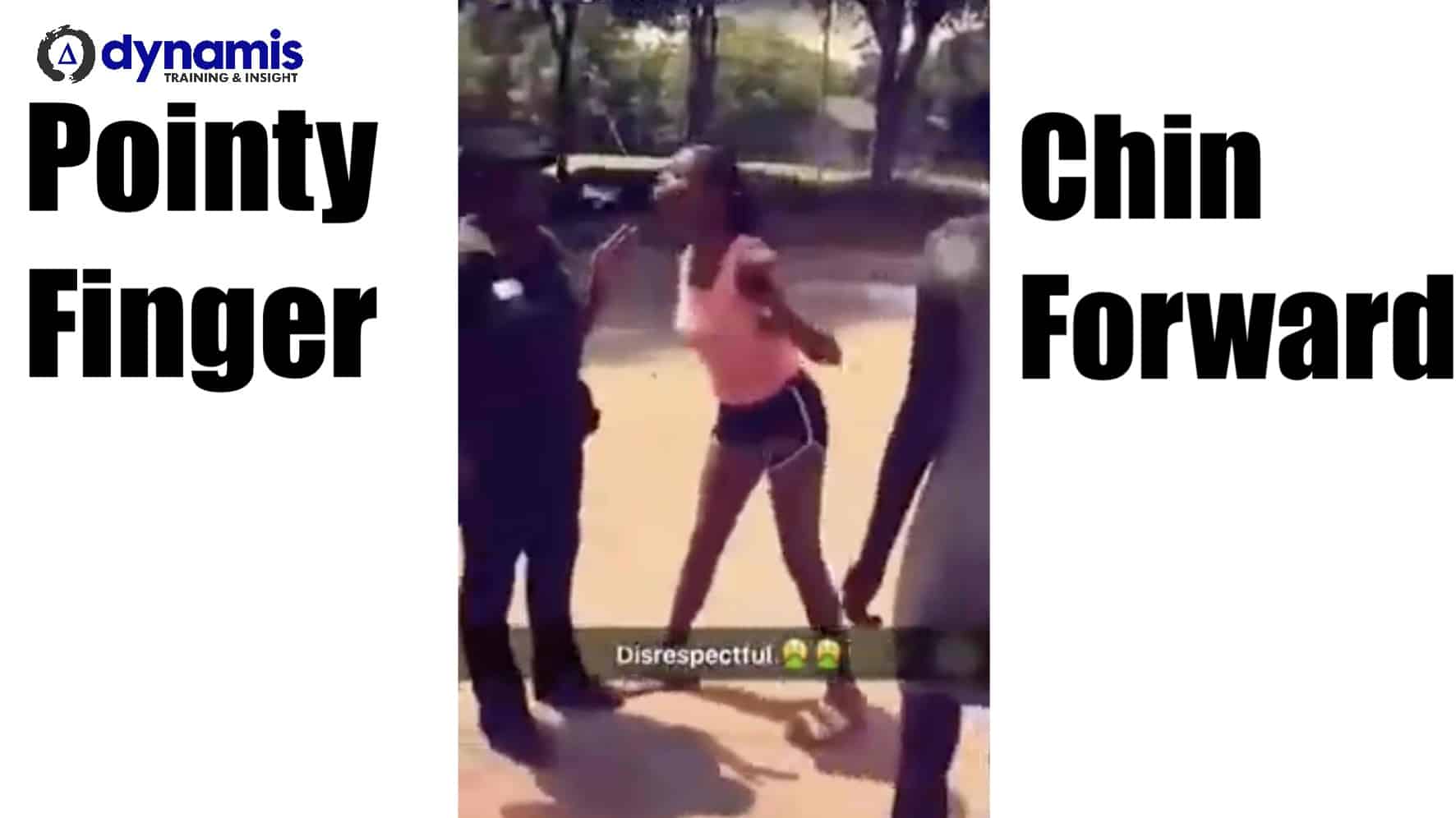
Watch here, the loading happens, the pursing and then the spit. So there’s a sequence to those events and that’s what I really wanted to show you today.
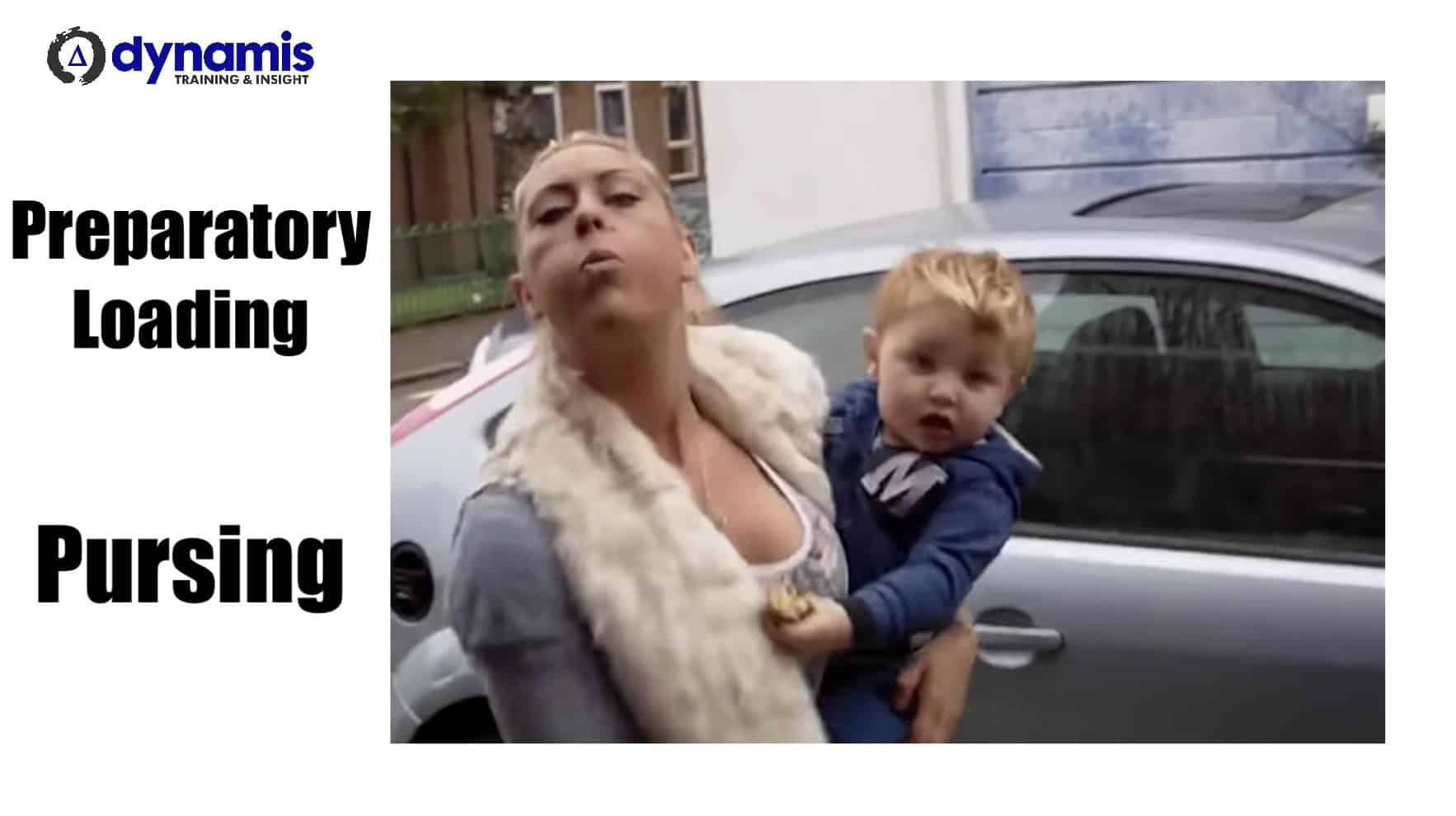
What can you do if someone is intentionally coughing on you?
Knowing what the pre cues are, what can you do about it? Well, we’re going to rely on natural defensive gestures – what we refer to as "instinctive protection".
I asked my daughter to spray me with water from with a hand-spray used in household cleaning – whenever she felt like it! (watch the video above to see the live results).
You’ll see me responding really late to these coughs and spits in the beginning – these are likely reactions if your awareness is low and/or you don’t see any pre-cues or respond late to the assault.
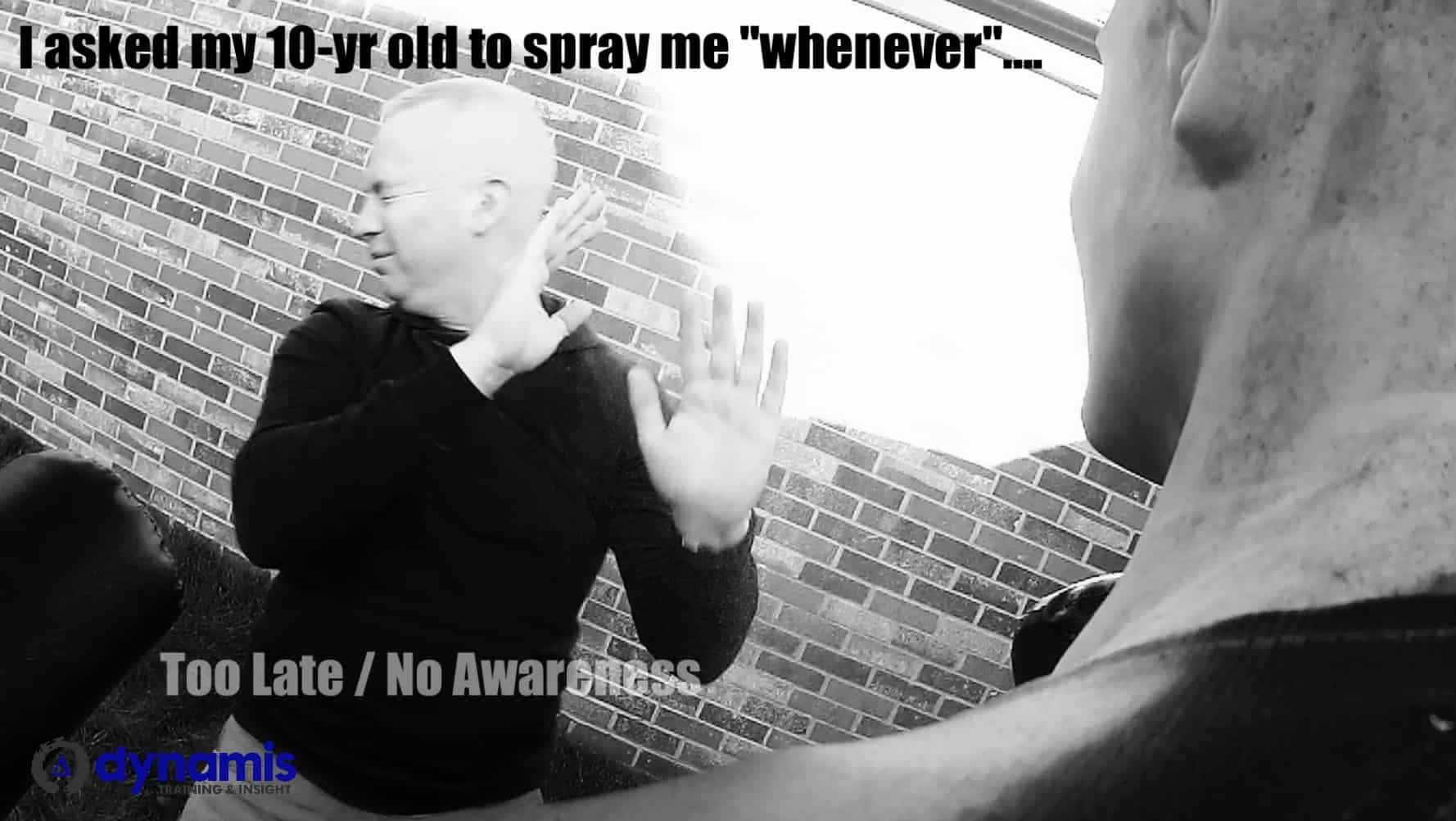
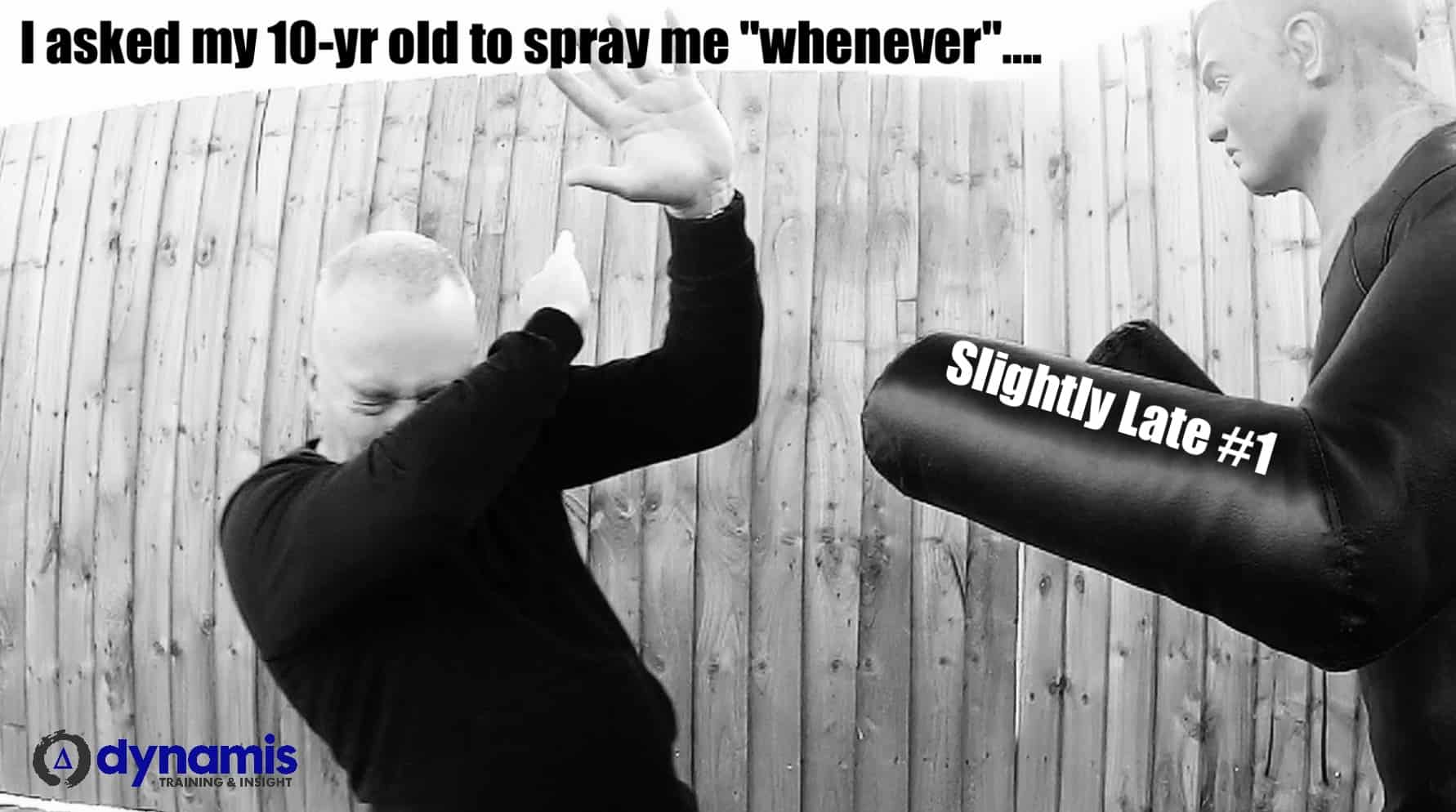
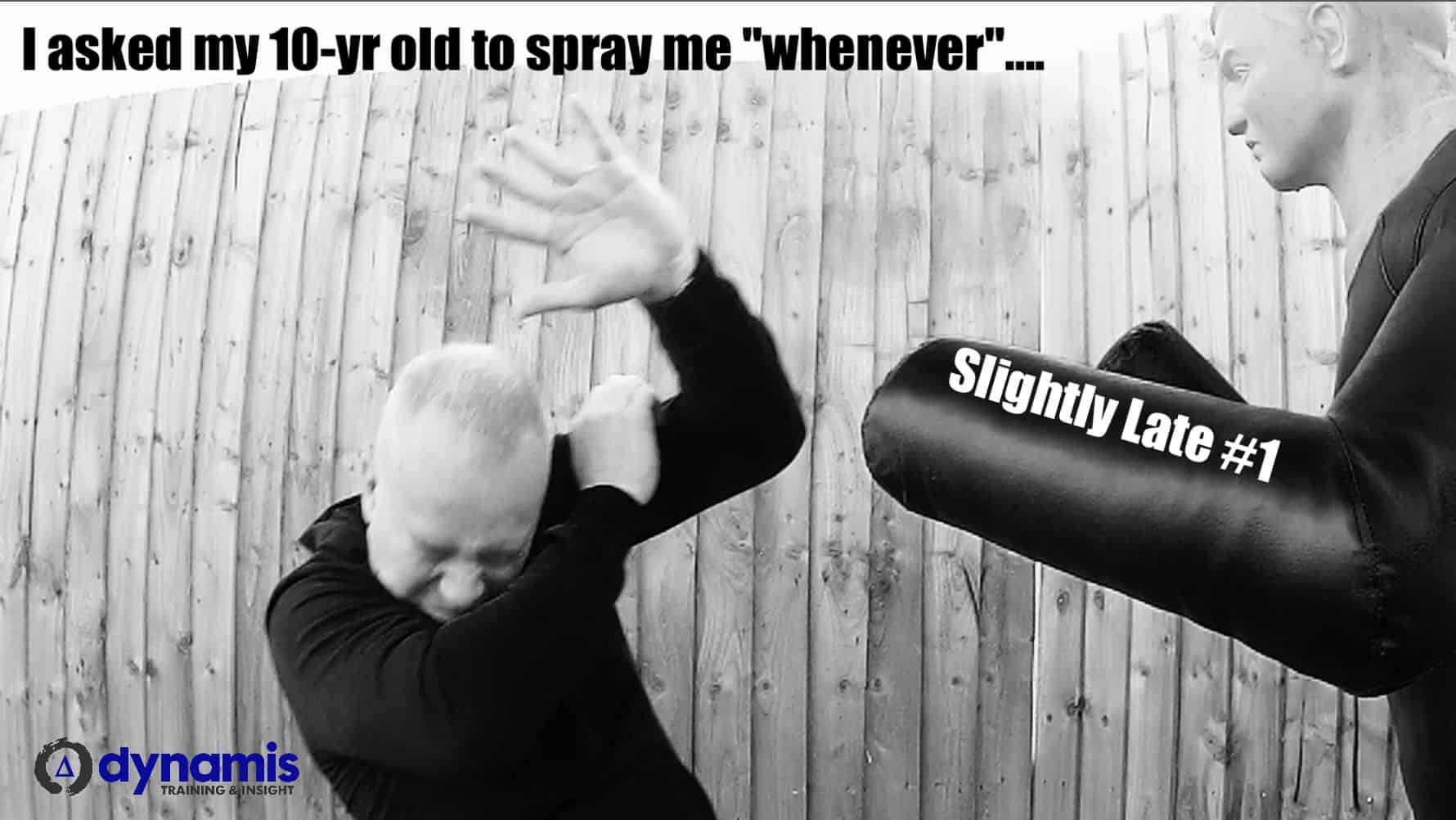
I started to get better after some exposure to the problem – my body is kicking in with protective gestures. Then, as the exercise progresses, I start to piggyback on them and turn them into covering motions.
One cover is where my arms go vertical around my head. One hand clasps the back of my head, the other hand clasps the wrist on the side of my forehead, placing the forearm across the top of my eyes.
And the other cover you see here is where I place my arms more horizontally, with my forearms to cover my eyes, nose, mouth, and so on. Both mitigate the risk of direct contact between airborne particles and my mouth, nose or eyes.
The key decision point at this moment is then whether to engage with the threat, or escape from the threat - options which will be dictated by the circumstances, the speed, intensity and movement of the subject and other factors.
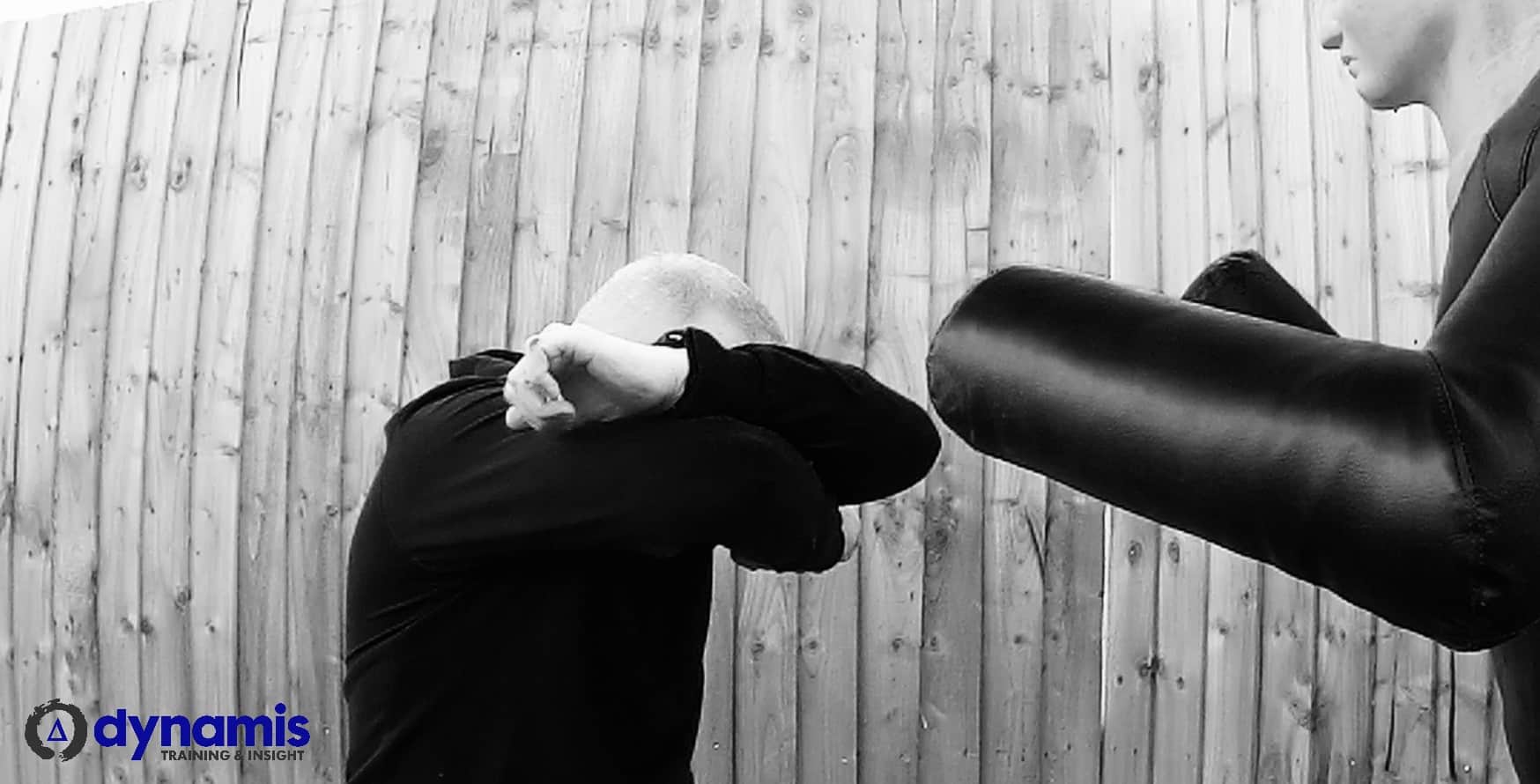
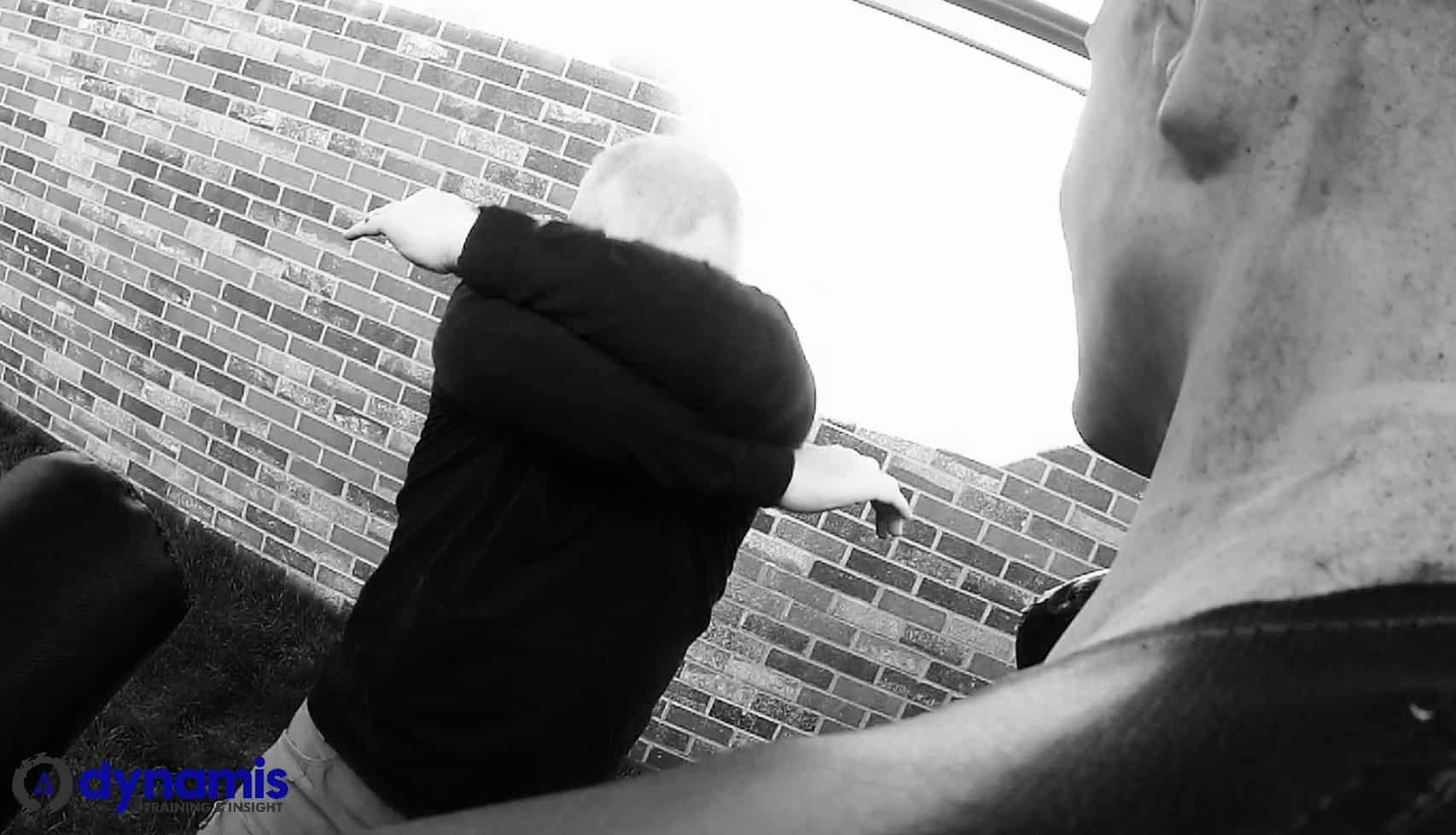
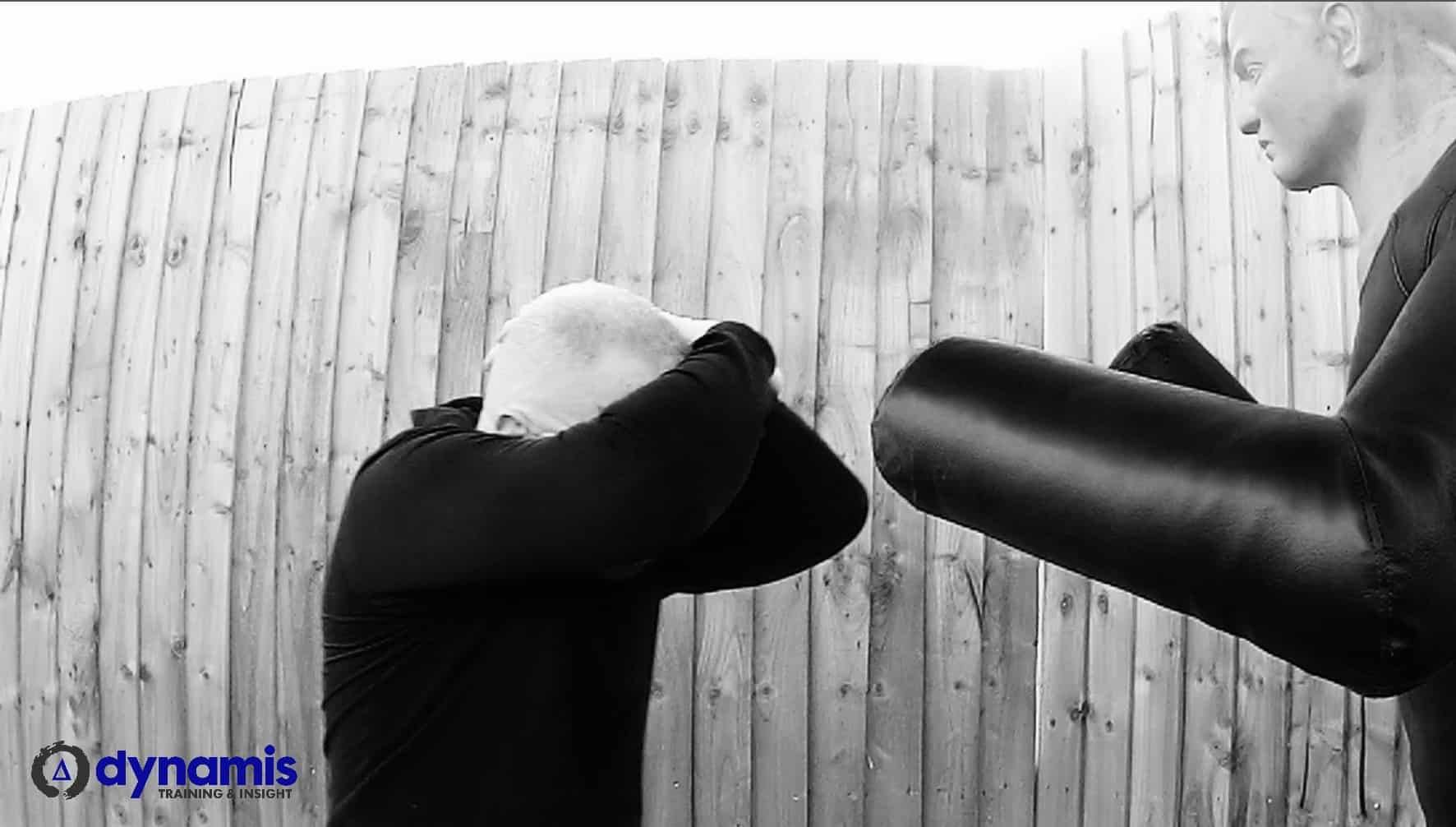
I designed this video and blog post to be really quick so that I could get it out and in front of people. I hope that it is helpful and might in fact give those out working on the front line some added protection as they meet resistant, frustrated or distressed people out in the community.
Please let me know if there is any questions you have or if you want to do any other issues that you see around this problem.
Click to learn more about Breakaway Training or Officer Safety Training from Dynamis.
Additional Information about Coughing and Spitting
Studies into how far coughs and sneezes can travel reveal that the 2m social distancing which has been recommended by government should be interpreted as a minimum and not a wholly safe distance. Watch this video to see the visualisation:
Spitting or Coughing are the most primal and emotive ways to be assaulted
In meeting staff around the country and discussing with them the issues around spitting for almost 15 years now, it has become clear to us that many staff would prefer to be punched, kicked or knocked down on the floor rather than be spat at or otherwise contaminated with another person's body fluids during a conflict.
We know that some people can respond powerfully to being attacked like this, for example this woman here, whose violent assault is precipitated by the victim coughing in her direction, according to police reports after the fact:
Indeed, professional contact staff such as security officers, police officers and other public services workers are not immune to the powerful effect which being spat at or coughed on can have on a normally professional demeanour. So much so that our colleagues at Vistelar have included being spat at in their scenarios for conflict management training for many years.
One of the tenets of the Vistelar approach is that "If you don't train staff what to say and do, you shouldn't be surprised at their words or actions" when an incident happens. It is vitally important for staff to have the opportunity to create mental models for 'responding, not reacting' to events when they happen.
This is particularly true when the person we may be interacting with is actually trying to pull at the professional emotional equilibrium of the person dealing with them...knowing that if they can help the officer or staff lose their cool, they have a chance to mitigate the consequences of their situation afterwards.
Watch here how the team - officers working together - keep everyone safe even when one of their own has been assaulted in this way.


